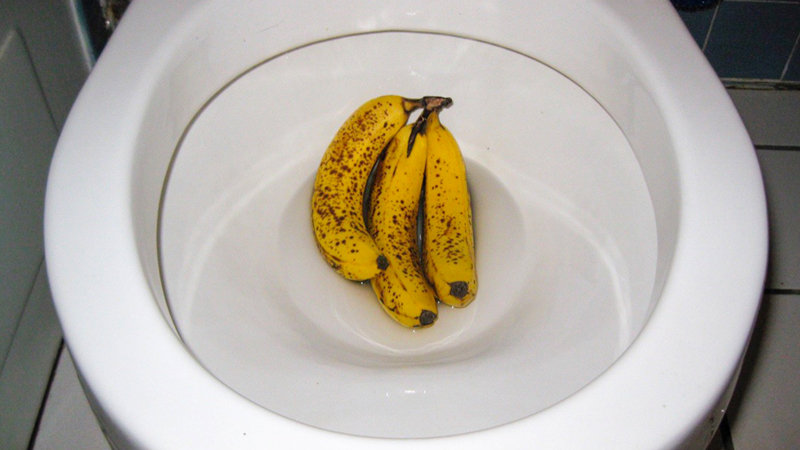Here down the page you might get a bunch of extremely good information concerning Is it safe to flush food (especially rice) down the toilet?.

Introduction
Many people are often faced with the predicament of what to do with food waste, specifically when it pertains to leftovers or scraps. One typical question that emerges is whether it's fine to flush food down the commode. In this short article, we'll explore the reasons why individuals might take into consideration purging food, the consequences of doing so, and different techniques for proper disposal.
Reasons that people might think about flushing food
Absence of awareness
Some people may not be aware of the possible harm brought on by flushing food down the bathroom. They might incorrectly think that it's a safe method.
Comfort
Purging food down the toilet may seem like a quick and simple option to getting rid of undesirable scraps, specifically when there's no close-by garbage can available.
Negligence
Sometimes, people may simply pick to flush food out of large negligence, without thinking about the consequences of their actions.
Effects of flushing food down the toilet
Environmental influence
Food waste that winds up in waterways can add to air pollution and damage aquatic ecosystems. In addition, the water made use of to flush food can stress water resources.
Pipes problems
Purging food can result in clogged pipes and drains pipes, causing pricey plumbing repair services and troubles.
Sorts of food that ought to not be purged
Coarse foods
Foods with fibrous structures such as celery or corn husks can obtain entangled in pipes and cause blockages.
Starchy foods
Starchy foods like pasta and rice can absorb water and swell, resulting in obstructions in pipelines.
Oils and fats
Greasy foods like bacon or food preparation oils need to never ever be purged down the toilet as they can solidify and cause blockages.
Proper disposal methods for food waste
Using a garbage disposal
For homes outfitted with waste disposal unit, food scraps can be ground up and purged through the plumbing system. Nevertheless, not all foods appropriate for disposal in this fashion.
Recycling
Particular food product packaging products can be recycled, decreasing waste and reducing environmental effect.
Composting
Composting is a green means to take care of food waste. Organic products can be composted and made use of to enhance soil for gardening.
The importance of proper waste monitoring
Minimizing environmental damage
Proper waste monitoring techniques, such as composting and recycling, assistance minimize air pollution and preserve natural deposits for future generations.
Protecting pipes systems
By preventing the practice of flushing food down the bathroom, property owners can stop expensive plumbing repair services and keep the honesty of their pipes systems.
Conclusion
Finally, while it may be appealing to purge food down the bathroom for benefit, it is very important to comprehend the prospective repercussions of this action. By adopting correct waste monitoring techniques and disposing of food waste sensibly, individuals can contribute to much healthier plumbing systems and a cleaner setting for all.
FLUSH FOOD DOWN THE TOILET?
FLUSHING FOOD CAN CAUSE BLOCKED DRAINS IN YOUR HOME
All of the plumbing fixtures in your home are connected to the same sewer pipe outside of your home. This outdoor sewer pipe is responsible for transporting all the wastewater from your home to the Council sewer mains. Even small pieces of food that go down the kitchen sink can cause problems for your sewer. It should therefore be obvious that flushing larger bits of food, such as meat, risks a clog in either the toilet itself or the sewer pipes. Flushing greasy food is even more problematic because oil coagulates when it cools, coating the interior lining of your pipes.
THE TOILET IS NOT A BIN
Food isn’t the only thing that people shouldn’t be flushing down the toilet. People use the toilet to dispose of all kinds of things such as tampons, makeup wipes, dental floss, kitty litter and even underwear. Water goes to great lengths to educate residents about the high costs and stress placed on wastewater treatment systems simply from people flushing the wrong stuff down the toilet. It costs taxpayers millions of dollars each year, and homeowners thousands in blocked drain repairs.
FLUSHING FOOD IS A WASTE OF WATER
Flushing food is a waste of our most precious resource - water. In June this year Level 1 water restrictions were introduced to protect water supply from drought conditions. Much of New South Wales continues to be affected by prolonged drought with recent figures revealing up to 97 per cent of the state remains in drought. Depending on whether you have a single or dual flush toilet, every single flush uses between five and 11 litres of water. In the current climate this is a huge amount of water to be wasting on flushing food that should be placed in the bin (or better yet, the compost).
https://www.jabplumbingsolutions.com.au/blog/can-you-flush-food-down-the-toilet

I am just very focused on Is it safe to flush food (especially rice) down the toilet? and I really hope you enjoyed reading the piece. If you enjoyed our blog entry please consider to pass it around. Thank you so much for going through it.
Instant Quote